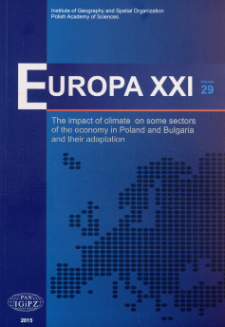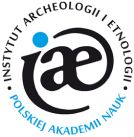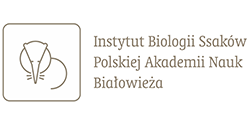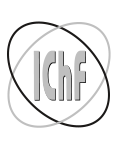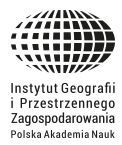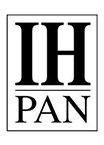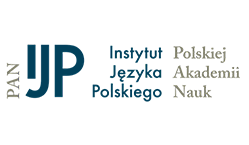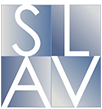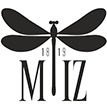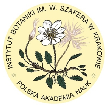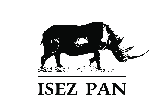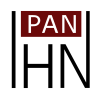
Object
Title: Assessment of occupational heat stress risk among agriculture workers in Poland and Bulgaria
Creator:
Błażejczyk, Krzysztof ; Kazandjiev, Valentin ; Degórski, Marek ; Dimitrov, Peter
Date issued/created:
Resource type:
Subtitle:
Publisher:
Place of publishing:
Description:
Type of object:
Abstract:
Agriculture is a sector of the national economy strongly influenced by climatic conditions. A majority of jobs in agriculture are still performed outdoors, under various weather conditions. Several meteorological situations can lead to severe disturbances in the organism of agricultural workers, with high temperature, intensive insolation and elevated air humidity proving especially dangerous, as such weather conditions can lead to overheating and dehydration of the body. The work presented here compares biothermal conditions in Poland and Bulgaria from the point of view of occupational health. To this end, use was made of several indices assessing heat stress in human beings, namely: Wet Bulb Globe Temperature (WBGT), HUMIDEX, Water Loss (SW), Universal Thermal Climate Index (UTCI) and Physiological Subjective Temperature (PST). When account was taken of the occurrence of heat extremes as defined by these indices, it proved possible to distinguish categories of health risk regarded as small, increased or great. Comparison of the two agricultural regions reveals significantly more severe heat stress in Bulgaria than in Poland, in terms of both the frequency of heat-stress episodes and the number of hours (daily and monthly) associated with heat stress. This ensures that dangerous conditions for agriculture workers are primarily present in Bulgaria, rather than in Poland.
References:
1. Adam-Poupart A., Labreche F., Smargiassi A., Duguay P., Busque M-A., Gagné C., Zayed J., 2012. Impacts des changements climatiques sur la santé et la sécurité des travailleurs. Institut de recherche Robert-Sauvé en santé et en sécurité du travail (IRSST). http://www.irsst.qc.ca/media/documents/PubIRSST/R-733.pdf [11 September 2015].
2. Błażejczyk K., 2011. Mapping of UTCI on the local scale (the case of Warsaw). Prace i Studia Geograficzne WGSR UW, vol. 47, pp. 275-283.
3. Błażejczyk K., Baranowski J., Błażejczyk A., 2014. Heat stress and occupational health and safety - spatial and temporal differentiation. Miscellanea Geographica - Regional Studies on Development, vol. 18, 1, pp. 61-67.
4. Błażejczyk K., Bröde P., Fiala D., Havenith G., Holmér I., Jendritzky G., Kampmann B., Kunert A., 2010. Principles of the new Universal Thermal Climate Index (UTCI) and its application to bioclimatic research on the European scale. Miscelanea Geographica, vol. 14, pp. 91-102.
5. Błażejczyk K., Epstein Y., Jendritzky G., Staiger H., Tinz B., 2012. Comparison of UTCI to selected thermal indices. International Journal of Biometeorology, vol. 56, no. 3, pp. 515-535.
http://dx.doi.org/10.1007/s00484-011-0453-2 -
6. Błażejczyk K., Kunert A., 2006. Differentiation of the bioclimatic conditions of urban areas (the case of Poland) [in:] 6th International Conference on Urban Climate, Preprints, June 12-16 2006, Göteborg, Sweden, Göteborg University, pp. 213-216.
7. Błażejczyk K., Kunert A., 2011. Bioklimatyczne podstawy rekreacji i turystyki w Polsce. Warszawa: IGiPZ PAN, Monografie, no. 14, 366 pp.
8. Bröde P., Błażejczyk K., Fiala D., Havenith G., Holmér I., Jendritzky G., Kuklane K., Kampmann B., 2013. The Universal Thermal Climate Index UTCI Compared to Ergonomics Standards for Assessing the Thermal Environment. Industrial Health, vol. 51, no. 1, pp. 16-24.
http://dx.doi.org/10.2486/indhealth.2012-0098 -
9. Bröde P., Fiala D., Błażejczyk K., Holmér I., Jendritzky G., Kampmann B., Tinz B., Havenith G., 2012. Deriving the operational procedure for the Universal Thermal Climate Index (UTCI). International Journal of Biometeorology, 56, 3, pp. 481-494.
http://dx.doi.org/10.1007/s00484-011-0454-1 -
10. CDC, 2008. Heat-Related Deaths among Crop Workers - United States, 1992-2006. MMWR Weekly, vol. 57, no. 24, pp. 649-653.
11. Epstein Y., Moran D.S., 2006. Thermal comfort and heat stress indices. Industrial Health, vol. 44, pp. 388-398.
http://dx.doi.org/10.2486/indhealth.44.388 -
12. Fiala D., Havenith G., Bröde P., Kampmann B., Jendritzky G., 2012. UTCI-Fiala multi-node model of human heat transfer and temperature regulation. International Journal of Biometeorology, vol. 56, no. 3, pp. 429-441.
http://dx.doi.org/10.1007/s00484-011-0424-7 -
13. Heat-waves: risks and responses, 2004. Health and Global Environmental Change, Geneva: Health and Global Environmental Change, SERIES, 2, WHO.
14. ISO 7243, 1989. Hot environments; estimation of the heat stress on working man, based on the WBGT-index (wet bulb globe temperature). Geneva: International Organisation for Standardization.
15. ISO 7933, 2004. Hot environments - analytical determination of thermal stress. Geneva: International Organisation of Standardization.
16. Jackson L.L., Rosenberg H.R., 2010. Preventing heat-related illness among agricultural workers. Journal of Agromedicine, vol. 15, no. 3, pp. 200-215.
http://dx.doi.org/10.1080/1059924X.2010.487021 -
17. Kampmann B., Bröde P., Fiala D., 2012. Physiological responses to temperature and humidity compared to the assessment by UTCI, WGBT and PHS. International Journal of Biometeorology, vol. 56, no. 3, pp. 505-513.
http://dx.doi.org/10.1007/s00484-011-0410-0 -
18. Kjellstrom T., Holmér I., Lemke B., 2009. Workplace heat stress, health and productivity - an increasing challenge for low- and middle-income countries during climate change. Global Health Action, 2.
http://dx.doi.org/10.3402/gha.v2i0.2047 -
19. Leibman A.K., Augustave W., 2010. Agricultural Health and Safety: Incorporating the Worker Perspective. Journal of Agromedicine, vol. 15, no. 3, pp. 192-199.
http://dx.doi.org/10.1080/1059924X.2010.486333 -
20. Masterson J., Richardson F.A., 1979. Humidex, A Method of Quantifying Human Discomfort Due to Excessive Heat and Humidity. Downsview, Ontario, Environment Canada.
21. Nag P.K., Nag A., 2009. Vulnerability to heat stress: Scenario in Western India. Ahmedabad, National Institute of Occupational Health. http://searo.who.int/india/topics/occupational_health/Occupational_Health_Vulnerability_to_heat_stress_scenario_of_western_India.pdf [15 September 2015].
22. Parsons K., 2003. Human thermal environments. The effects of hot, moderate and cold temperatures on human health, comfort and performance. 2nd edition. London: Taylor and Francis.
23. Yaglou C.P., Minard D., 1957. Control of heat casualties at military training centres. American Medical Association Archives of Industrial Health, vol. 16, pp. 302-316.
Relation:
Volume:
Start page:
End page:
Detailed Resource Type:
Format:
File size 3,4 MB ; application/pdf
Resource Identifier:
oai:rcin.org.pl:58780 ; 1429-7132 ; 10.7163/Eu21.2015.29.4
Source:
CBGiOŚ. IGiPZ PAN, call nos.: Cz.6406, Cz.6407 ; click here to follow the link
Language:
Language of abstract:
Rights:
Terms of use:
Copyright-protected material. May be used within the limits of statutory user freedoms
Digitizing institution:
Institute of Geography and Spatial Organization of the Polish Academy of Sciences
Original in:
Projects co-financed by:
European Union. European Regional Development Fund ; Programme Innovative Economy, 2010-2014, Priority Axis 2. R&D infrastructure
Access:
Object collections:
- Institute of Geography and Spatial Organization PAS (IGiPZ PAN) > Publications of IGiPZ PAN and employees
- Institute of Geography and Spatial Organization PAS (IGiPZ PAN) > Library > Series/Journals/Periodics
Last modified:
Oct 13, 2023
In our library since:
May 9, 2016
Number of object content downloads / hits:
1650
All available object's versions:
https://www.rcin.org.pl/igipz/publication/78625
Show description in RDF format:
Show description in RDFa format:
Show description in OAI-PMH format:
| Edition name | Date |
|---|---|
| Błażejczyk K. i in. - Assessment of occupational heat stress risk among agriculture workers in Poland and Bulgaria | Oct 13, 2023 |
Objects Similar
Milewski, Paweł Szmyd, Jakub
Szmyd, Jakub Milewski, Paweł
Kuchcik, Magdalena

 INSTYTUT ARCHEOLOGII I ETNOLOGII POLSKIEJ AKADEMII NAUK
INSTYTUT ARCHEOLOGII I ETNOLOGII POLSKIEJ AKADEMII NAUK
 INSTYTUT BADAŃ LITERACKICH POLSKIEJ AKADEMII NAUK
INSTYTUT BADAŃ LITERACKICH POLSKIEJ AKADEMII NAUK
 INSTYTUT BADAWCZY LEŚNICTWA
INSTYTUT BADAWCZY LEŚNICTWA
 INSTYTUT BIOLOGII DOŚWIADCZALNEJ IM. MARCELEGO NENCKIEGO POLSKIEJ AKADEMII NAUK
INSTYTUT BIOLOGII DOŚWIADCZALNEJ IM. MARCELEGO NENCKIEGO POLSKIEJ AKADEMII NAUK
 INSTYTUT BIOLOGII SSAKÓW POLSKIEJ AKADEMII NAUK
INSTYTUT BIOLOGII SSAKÓW POLSKIEJ AKADEMII NAUK
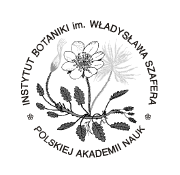 INSTYTUT CHEMII FIZYCZNEJ PAN
INSTYTUT CHEMII FIZYCZNEJ PAN
 INSTYTUT CHEMII ORGANICZNEJ PAN
INSTYTUT CHEMII ORGANICZNEJ PAN
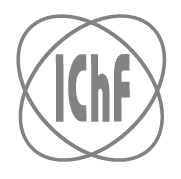 INSTYTUT FILOZOFII I SOCJOLOGII PAN
INSTYTUT FILOZOFII I SOCJOLOGII PAN
 INSTYTUT GEOGRAFII I PRZESTRZENNEGO ZAGOSPODAROWANIA PAN
INSTYTUT GEOGRAFII I PRZESTRZENNEGO ZAGOSPODAROWANIA PAN
 INSTYTUT HISTORII im. TADEUSZA MANTEUFFLA POLSKIEJ AKADEMII NAUK
INSTYTUT HISTORII im. TADEUSZA MANTEUFFLA POLSKIEJ AKADEMII NAUK
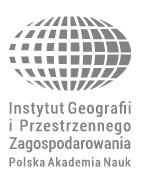 INSTYTUT JĘZYKA POLSKIEGO POLSKIEJ AKADEMII NAUK
INSTYTUT JĘZYKA POLSKIEGO POLSKIEJ AKADEMII NAUK
 INSTYTUT MATEMATYCZNY PAN
INSTYTUT MATEMATYCZNY PAN
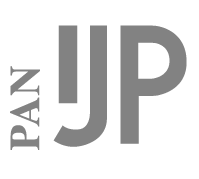 INSTYTUT MEDYCYNY DOŚWIADCZALNEJ I KLINICZNEJ IM.MIROSŁAWA MOSSAKOWSKIEGO POLSKIEJ AKADEMII NAUK
INSTYTUT MEDYCYNY DOŚWIADCZALNEJ I KLINICZNEJ IM.MIROSŁAWA MOSSAKOWSKIEGO POLSKIEJ AKADEMII NAUK
 INSTYTUT PODSTAWOWYCH PROBLEMÓW TECHNIKI PAN
INSTYTUT PODSTAWOWYCH PROBLEMÓW TECHNIKI PAN
 INSTYTUT SLAWISTYKI PAN
INSTYTUT SLAWISTYKI PAN
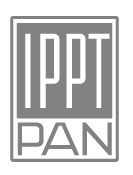 SIEĆ BADAWCZA ŁUKASIEWICZ - INSTYTUT TECHNOLOGII MATERIAŁÓW ELEKTRONICZNYCH
SIEĆ BADAWCZA ŁUKASIEWICZ - INSTYTUT TECHNOLOGII MATERIAŁÓW ELEKTRONICZNYCH
 MUZEUM I INSTYTUT ZOOLOGII POLSKIEJ AKADEMII NAUK
MUZEUM I INSTYTUT ZOOLOGII POLSKIEJ AKADEMII NAUK
 INSTYTUT BADAŃ SYSTEMOWYCH PAN
INSTYTUT BADAŃ SYSTEMOWYCH PAN
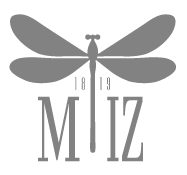 INSTYTUT BOTANIKI IM. WŁADYSŁAWA SZAFERA POLSKIEJ AKADEMII NAUK
INSTYTUT BOTANIKI IM. WŁADYSŁAWA SZAFERA POLSKIEJ AKADEMII NAUK
